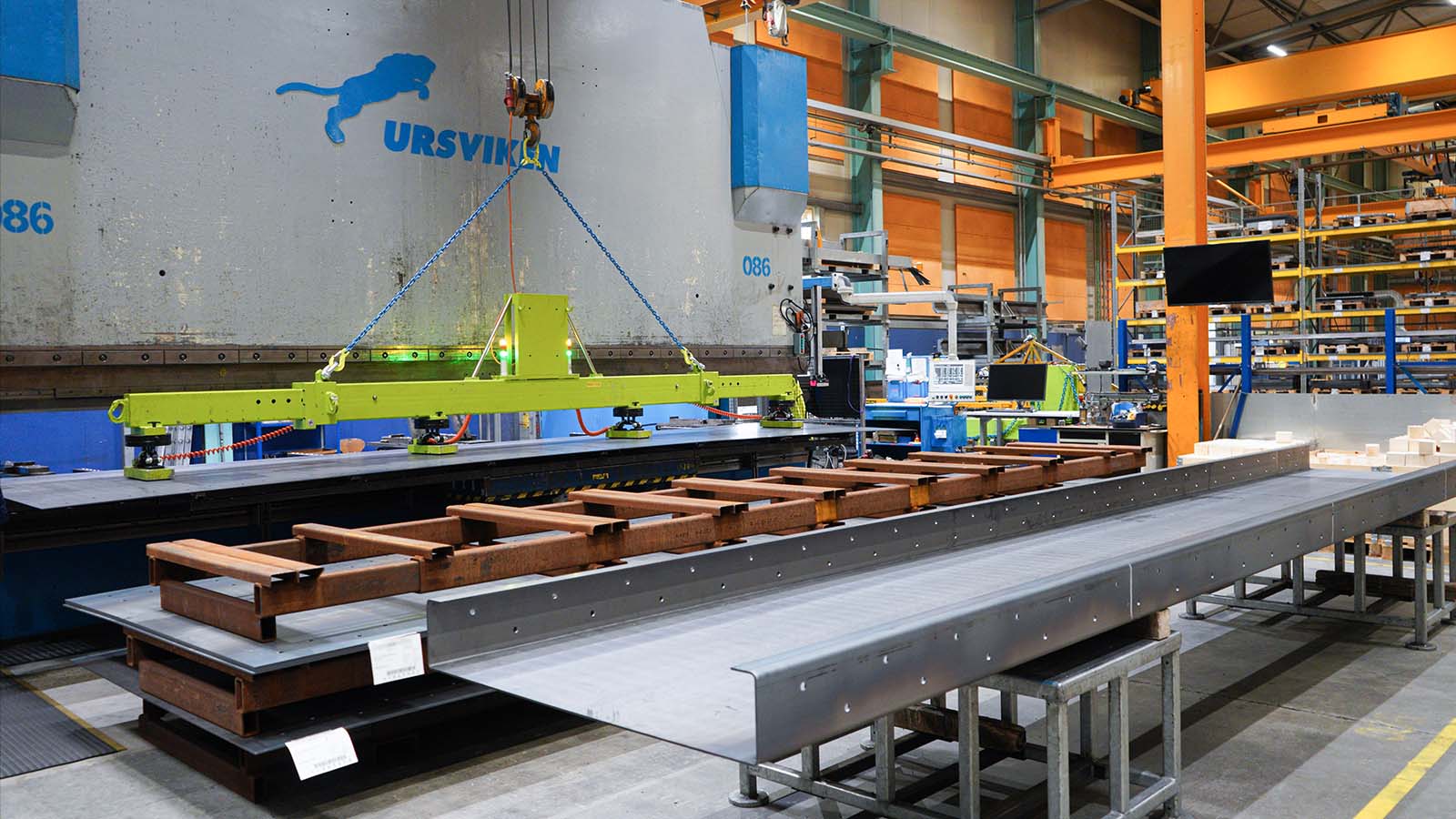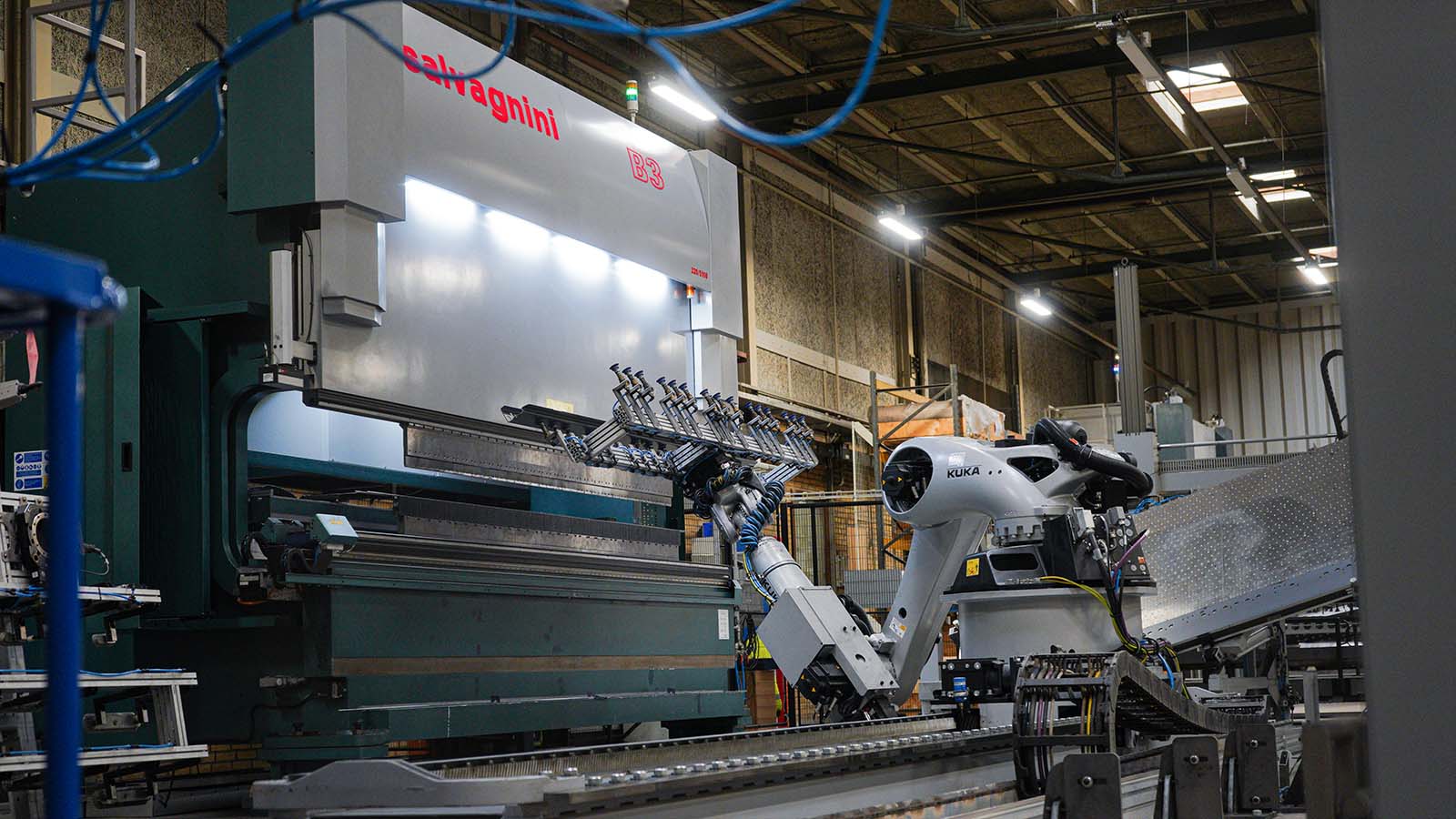Why choose our sheet metal bending services?
-
Extended Capabilities: We offer sheet metal bending up to 14,400 mm. We transcend the standard limitations of many steel processing firms, which typically handle steel parts of up to 4 m.
-
Expertise and Quality: Our team of experienced operators bring to bear a high level of skill and expertise, ensuring premium quality in the bending of your steel components.
-
Ample Capacity: Our facility houses 12 state-of-the-art press brakes, accommodating both large and small steel workpieces.
-
Bending Power: We handle workpieces of up to 40 mm in thickness, applying a pressing force of 1,400 t on our most robust press brakes. Our capabilities are designed to meet demanding requirements.
-
Versatile Applications: Our sheet metal bending services accommodate a wide range of materials, including steel, aluminum, and stainless steel. We cater to diverse shapes and sizes, reflecting the flexibility of our operations.
Our sheet metal bending capabilities:
|
Material thickness: |
max. 40 mm |
|
Length: |
max. 14,400 mm |
|
Press power: |
max. 1,400 t |
Sheet metal bending services - part of a larger concept
Beyond sheet metal bending, we offer a comprehensive concept that includes specialized consulting, an independent steel service centre with slitting and cut-to-length services, complete solutions in sheet metal fabrications, roll forming, dependable logistics and delivery, a greener value chain, dedicated project management and customer service, and customized quality assurance. Discover more about our complete concept.





